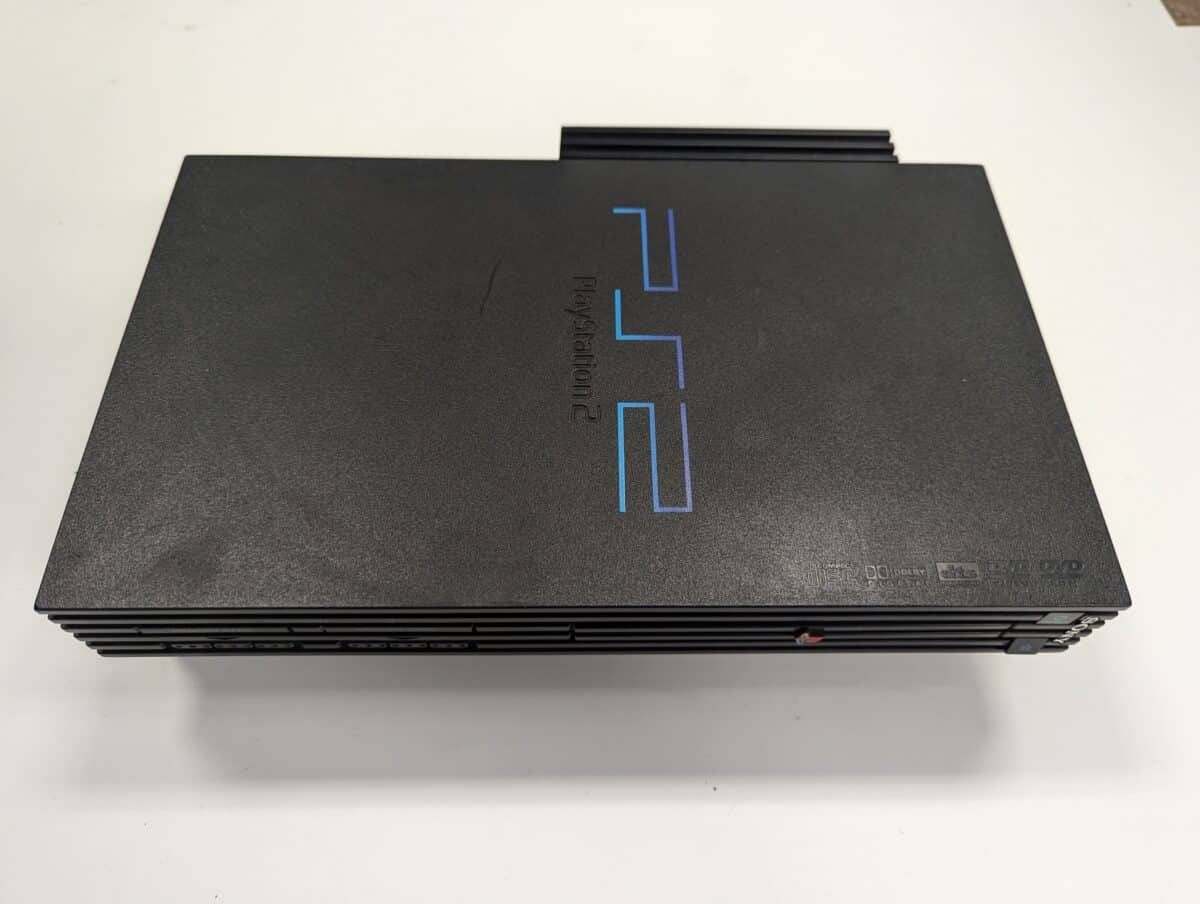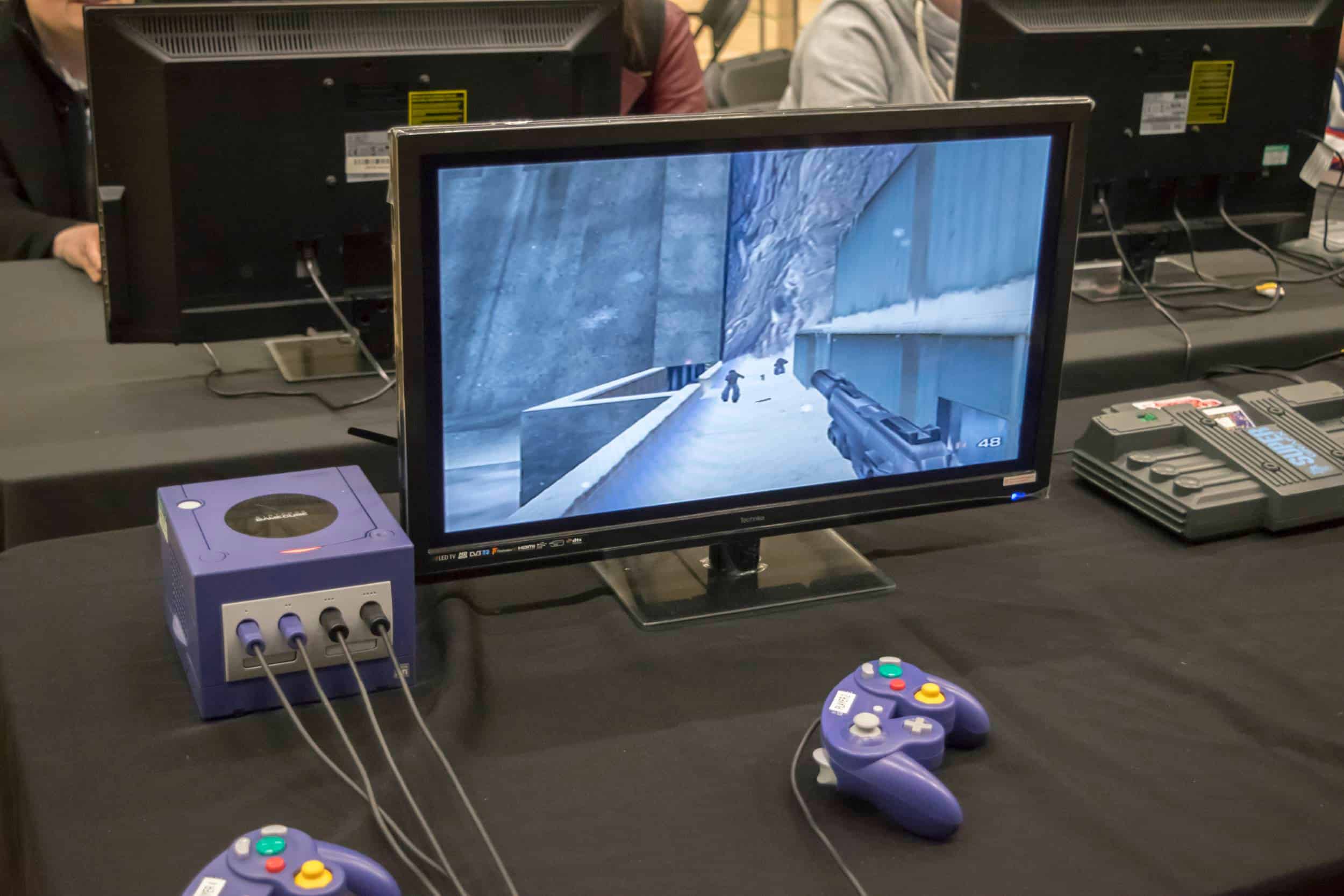Released in the United States on November 18, 2001, three months after Japan, the Nintendo GameCube was a hotly anticipated console from the beloved video game manufacturer. The successor to the Nintendo 64, Nintendo had high hopes it could conquer the sixth generation console era while facing off against the PlayStation 2, Dreamcast, and the original Xbox.
The reception of the GameCube was decidedly mixed. While the game library and console controller received praise, the GameCube suffered several pitfalls. While selling 21.74 million consoles might be a success in some circles, this number was far smaller than Nintendo anticipated and well over 130 million less than the PlayStation 2.
No DVD Player
One of the primary reasons the Nintendo GameCube quickly failed to win customers was its lack of DVD capability. With the launch of the PlayStation 2, Sony essentially had a two-purpose system on its hands. Its primary use case was undoubtedly that of a video game machine, but playing DVDs enabled the PlayStation 2 to be a multimedia system for the whole family.
Considering the cost of a separate DVD player in 2000, packaging one with the PlayStation 2 was an excellent value for consumers. As the Xbox also launched with DVD compatibility, Nintendo was left behind looking outdated.
No Online Gaming
The sixth console generation was heavily focused on multiplayer gameplay, except for Nintendo and the GameCube. Even today, with the Nintendo Switch, which will likely become the best-selling video game console ever, Nintendo’s multiplayer gaming experience leaves its fanbase, even its most rabid fans, wanting more.
Today, you need the iPhone or smartphone app to have a voice chat, which starkly reminds us why GameCube’s lack of online gaming was a notable omission. Even Sega, which also failed with the Dreamcast, added multiplayer compatibility. While this console failed for different reasons, it was a reminder that Nintendo was the only console of the era without a serious approach to online gaming.

Lack of Games
Arguably, the biggest reason the Nintendo GameCube failed is its library, which was lacking in multiple categories. Nintendo has unquestionably some of the best first-party intellectual property in the video game industry, arguably better than Sony and Microsoft.
However, regarding third-party support, GameCube quickly proved too reliant on first-party titles. With the PlayStation 2 having racing games like Gran Turismo, the cartoony nature of Mario Kart Double Dash wasn’t enough to overcome the real-world beauty of Gran Turismo.
Sports games were another category that Nintendo lacked, and they spoke directly to online gaming. With the popularity of basketball and football during the sixth-generation console era, multiplayer gaming with friends was a must, and Nintendo didn’t have the games or the ability to play them online.
At the end of the day, it felt like only Nintendo could get the most out of the GameCube console, while third-party developers were stuck trying their best with their best often falling short.
Rareware Leaving for Microsoft
On the topic of games, the loss of Rare-ware content for the GameCube, which proved so popular on previous Nintendo consoles, was a huge blow. Popular titles on the Nintendo 64, like Perfect Dark, Conker’s Bad Fur Day, and Banjo-Kazooie, may have enjoyed follow-ups on the Nintendo GameCube had this relationship not been dropped.
Ultimately, Microsoft came in spending big and grabbed these titles for its Xbox launch console. Even when allowed to match Microsoft’s offer, Nintendo declined, a decision that likely still haunts them today. While Rare games will never be mentioned among the Xbox’s best-selling titles, it was still a considerable blow to the GameCube’s content library.

Microdisk Over CD Format
After the Nintendo 64 console era, Nintendo should have learned its lesson about sticking with outdated cartridge formats. The CD-ROM was the next big thing, and the company hoped to use this format for its Nintendo 64 follow-up.
During development, Nintendo chose an optical disk format for the GameCube. It just wasn’t the right one. The “microdisk” was an 8-centimeter disk instead of 12 cm for CDs/DVDs.
The result is that the Microdisk could only hold 1.5GB of information. In comparison, the DVD format could hold 4GB, which meant games on the Xbox and PlayStation 2 were beefier, longer, and had better audio and cutscenes that the GameCube could not match.
Sadly, after adopting the DVD format for the Nintendo Wii and Wii U, Nintendo returned to the cartridge era with the Nintendo Switch, much to video gamers’ dismay.
The image featured at the top of this post is ©Paul Stringer/Shutterstock.com.



